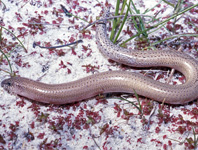Abstract
Four new species of Pseudochironomus Malloch were recorded in Brazilian highlands, three from Atlantic forest and one from Amazon Forest. Adult males and immature stages of Pseudochironomus ruah sp. n., P. jordensis sp. n. and adult males of P. mocidade sp. n., P. surianae sp. n. are described and illustrated. Adult males and females of P. ruah sp. n. were associated using DNA barcodes along with a NJ tree for all Pseudochironomini barcoding sequences publicly available. An emendation to generic diagnoses is provided, once it is the first time that thoracic acrostichals have been described for Pseudochironomus species.
References
Andersen, T. (2016) Madachironomus, a new genus of tribe Pseudochironomini (Diptera: Chironomidae, Chironominae) from Madagascar. CHIRONOMUS Journal of Chironomidae Research, 29, 15–26.
https://doi.org/10.5324/cjcr.v0i29.2113Carneiro, E., Mielke, O.H.H., Casagrande, M.M. & Fiedler, K. (2014) Community Structure of Skipper Butterflies (Lepidoptera, Hesperiidae) along Elevational Gradients in Brazilian Atlantic Forest Reflects Vegetation Type Rather than Altitude. PLoS ONE, 9, e108207.
https://doi.org/10.1371/journal.pone.0108207Chaves, A.V., Freitas, G.H., Vasconcelos, M.F. & Santos, F.R. (2015) Biogeographic patterns, origin and speciation of the endemic birds from eastern Brazilian mountaintops: a review. Systematics and Biodiversity, 13, 1–16.
https://doi.org/10.1080/14772000.2014.972477Cranston, P.S., Dillon, M.E., Pinder, L.C.V. & Reiss, F. (1989) 10. The adult males of Chironominae (Diptera: Chironomidae) of the Holarctic region – Keys and diagnoses. In: Wiederholm, T. (Ed.), Chironomidae of the Holarctic region. Keys and diagnoses. Part 3. Adult males. Entomologica scandinavica, 34 (Supplement), pp. 353–502.
Cranston, P.S. (2003) The oriental genus Shangomyia Sæther & Wang (Chironomidae: Diptera): immature stages, biology, putative relationships and the evolution of wood mining in chironomid larvae. The Raffles Museum Bulletin of Zoology, 51, 179–186.
Epler, J.H., Ekrem, T. & Cranston, P.S. (2013) 10. The larvae of Chironominae (Diptera: Chironomidae) of the Holarctic region - Keys and diagnoses. In: Andersen, T., Cranston, P.S. & Epler, J.H. (Eds.), Chironomidae of the Holarctic Region: Keys and Diagnoses. Part 1. Larvae. Insect Systematics and Evolution, 66 (Supplement), pp. 387–556.
Kieffer, J.J. (1925) Chironomidaes de la Republique Argentine. Annals Societé Scientifique Bruxelles, 44, 73–92.
Kimura M. (1980) A simple method for estimating evolutionary rates of base substitutions through comparative studies of nucleotide-sequences. Journal of Molecular Evolution, 16, 111–120.
https://doi.org/10.1007/BF01731581Nogueira, A.A., Pena-Barbosa, J.P.P., Venticinque, E.M. & Brescovit, A. (2011) The spider genus Chrysometa (Araneae, Tetragnathidae) from the Pico da Neblina and Serra do Tapirapecó mountains (Amazonas, Brazil): new species, new records, diversity and distribution along two altitudinal gradients. Zootaxa, 2772, 33–51.
Paggi, A.C. & Rodriguez-Garay, G.N. (2015) The presence of species of Pseudochironomus Malloch 1915 (Diptera: Chironomidae) in watercourses of Chaco Serrano Ecoregion (Argentina, South America). Zootaxa, 3957 (3), 334–341.
https://doi.org/10.11646/zootaxa.3957.3.6Ratnasingham, S. & Hebert, P.D.N. (2013) A DNA-based registry for all animal species: the Barcode Index Number (BIN) system. PLoS ONE, 8, e66213.
https://doi.org/10.1371/journal.pone.0066213Ribeiro, L.F., Bornschein, M.R., Belmonte-Lopes, R., Firkowski, C.R., Morato, S.A.A. & Pie, M.R. (2015) Seven new species of Brachycephalus (Anura: Brachycephalidae) from southern Brazil. PeerJ, 3, e1011.
Roback, S.S. (1960) Results of the Catherwood Peruvian– Amazon Expedition. New species of South American Tendipedidae (Diptera). Transactions of American Entomological Society, 86, 87–107.
Roque, F.O., Correia, L.C.S., Trivinho-Strixino, S. & Strixino, G. (2004) A review of chironomidae studies in lentic systems in the state of São Paulo, Brazil. Biota Neotropica, 4, 1–19.
https://doi.org/10.1590/S1676-06032004000200018Rosa, B.F.J.V., Dias-Silva, M.V.D. & Alves, R.G. (2013) Composition and structure of the Chironomidae (Insecta: Diptera) community cssociated with bryophytes in a first–order stream in the Atlantic Forest, Brazil. Neotropical Entomology, 42, 15–21.
https://doi.org/10.1007/s13744-012-0086-0Sæther, O.A. (1977) Taxonomic studies on Chironomidae: Nanocladius, Pseudochironomus, and the Harnischia complex. Bulletin of the Fisheries Research Board of Canada, 196, 1–143.
Sæther, O.A. (1980) Glossary of chironomid morphology terminology (Chironomidae: Diptera). Entomologica scandinavica, 14 (Supplement), 1–51.
Shimabukuro, E.M., Pepinelli, M., Perbiche-Neves, G. & Trivinho-Strixino, S. (2015) A new trap for collecting aquatic and semi–aquatic insects from madicolous habitats. Insect Conservation and Diversity, 8, 578–583.
https://doi.org/10.1111/icad.12135Spies, M. & Reiss, F. (1996) Catalog and bibliography of Neotropical and Mexican Chironomidae) (Insecta, Diptera). Spixiana, Supplement, 22, 61–119.
Suriano, M.T. & Fonseca-Gessner, A.A. (2004) Chironomidae (Diptera) larvae in streams of Parque Estadual de Campos do Jordão, São Paulo state, Brazil. Acta Limnologica Brasiliensia, 16, 129–136.
Tamura, K., Peterson, D., Peterson, N., Stecher, G., Nei, M. & Kumar, S. (2011) MEGA5: molecular evolutionary genetics analysis using maximum likelihood, evolutionary distance, and maximum parsimony methods. Molecular Biology and Evolution, 28, 2731–2739.
https://doi.org/10.1093/molbev/msr121Trivinho-Strixino, S. (2011) Larvas de Chironomidae. Guia de identificação. EdUFSCar, São Carlos, 371 pp.
Trivinho–Strixino, S. & Pepinelli, M. (2015) A systematic study on Endotribelos Grodhaus (Diptera: Chironomidae) from Brazil including DNA barcoding to link males and females. Zootaxa, 3936 (1), 1–41.
https://doi.org/10.11646/zootaxa.3936.1.1Trivinho–Strixino, S., Pepinelli, M., Siqueira, T. & Roque, F.O. (2012) DNA barcoding of Podonomus (Chironomidae, Podonominae) enables stage association of a named species and reveals hidden diversity in Brazilian inselbergs. Annales de Limnologie, 48, 411–423.
https://doi.org/10.1051/limn/2012032Wiedenbrug, S. (2000) Studie zur Chironomidenfauna aus Bergbächen von Rio Grande do Sul, Brazilien. Ph.D. thesis, Ludwig-Maximilians-Universität, Munich, 444 pp.

